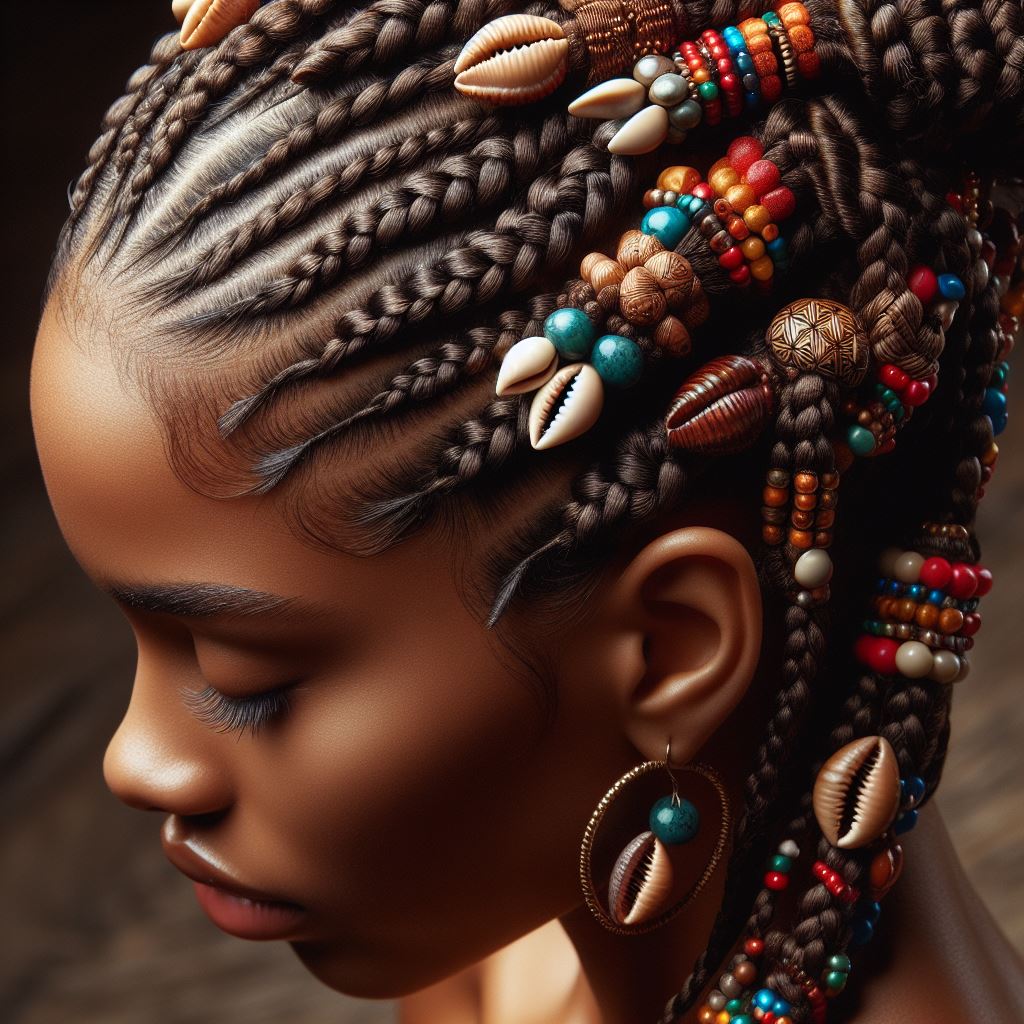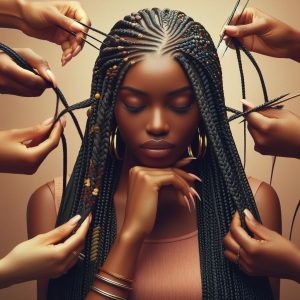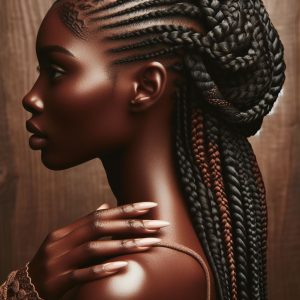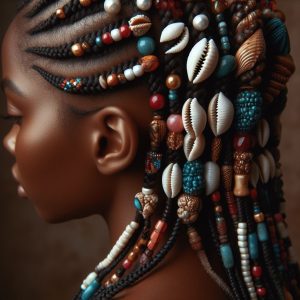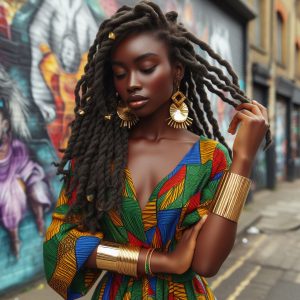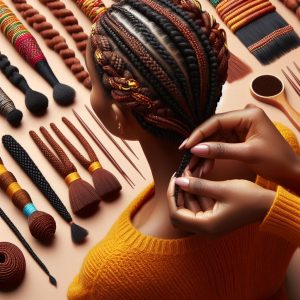African Hair Braiding: A Cultural Expression of Beauty and Identity
African hair braiding is an ancient art form that holds deep cultural significance and has been practiced for centuries across the African continent. These intricate hairstyles serve as a means of self-expression, identity, and social status within various African communities.
The artful, elaborate styles speak to traditions hailing back hundreds of years linking generations, tribes, and entire cultures. Today, the essence behind the process remains as women and men around the world don intricate braids and patterns that pay homage to their history.
Braiding Techniques: A Journey into Diversity
Braiding techniques are a fascinating aspect of human culture, showcasing a remarkable diversity of styles and practices across various regions and communities. With a rich history spanning centuries, braiding has evolved into an art form that holds deep cultural significance and reflects the creativity and artistry of different societies.
The intricate patterns and designs created through braiding techniques serve as a means of self-expression, identity, and social status. From the intricate cornrows of African cultures to the elaborate braids of Native American tribes, each braiding style carries its own unique story and symbolism.
In recent years, there has been a growing appreciation for the beauty and diversity of braiding techniques, leading to a surge in the popularity of braiding as a form of personal adornment. This trend has fostered a greater understanding and respect for the cultural heritage behind different braiding styles, promoting inclusivity and cross-cultural exchange.
As we delve deeper into the world of braiding techniques, we embark on a journey of cultural exploration, celebrating the rich tapestry of human creativity and the enduring power of tradition.
African hair braiding encompasses a wide range of techniques, each with its unique patterns and styles. Some popular braiding methods include:
- Cornrows: Tightly braided rows that run parallel to the scalp.
- Box Braids: Square-shaped sections of hair that are braided individually.
- Twists: Two strands of hair twisted together to create a rope-like effect.
- Dreadlocks: Natural locks formed by allowing hair to mat and tangle.
- Fulani Braids: Long, intricate braids adorned with beads and accessories.
Caring for Your Braids: Nurturing Healthy Hair
Braids are a beautiful and versatile protective style that can help you achieve a variety of looks. However, it’s important to take proper care of your braids to ensure that your hair stays healthy and strong.
Here are some tips for caring for your braids:
- Wash your braids regularly. This will help to remove dirt, oil, and product buildup that can weigh your braids down and cause them to become brittle. Be sure to use a gentle shampoo and conditioner that is designed for natural hair.
- Deep condition your braids once a week. This will help to keep your hair moisturized and prevent it from becoming dry and brittle. You can use a store-bought deep conditioner or make your own at home with ingredients like coconut oil, olive oil, or avocado.
- Avoid using harsh chemicals on your braids. This includes relaxers, perms, and color treatments. These chemicals can damage your hair and cause it to break.
- Protect your braids from the elements. When you’re outdoors, be sure to wear a hat or scarf to protect your braids from the sun, wind, and rain.
- Get your braids professionally installed and removed. This will help to ensure that your braids are done correctly and that your hair is not damaged.
By following these tips, you can help to keep your braids healthy and beautiful for weeks to come.
Weaving Symbols of Significance Through African Tribal Life
The Genesis of Intricate Messaging
Since their earliest incarnations, African braids have woven intricate stories into hair. Styles indicated a wearer’s region, family lineage, age group, marital status, wealth, religious beliefs, milestone events, and more. This ingenious messaging allowed tribal groups to silently communicate important information at a glance. For tribal Africans, braided locks demarcated not just identity, but an entire way of life.

As techniques and tools advanced over generations, the breadth of messaging and storytelling increased exponentially. Styles blossomed from simple plaits into sweeping architectural feats of gravity-defying braids stacked into regal cone shapes, perfect spheres, and concentric 3D circles and towers atop the head. This evolution reflected the growing sophistication of tribes into complex cultural collectives with nuanced systems of ancestral reverence, wealth distribution, and status recognition.
From Tribal Roots to Shared Struggle
When Africans were stolen from their homelands and forced into slavery starting in the 15th century, they clung to cultural touchstones like braided hairstyles to maintain spiritual connections and community. Under cruel oppression, these enduring styles represented more than fashion – they wove tales of past lives and the hope of freedom.
As slavery gave way to long fights for civil rights across the Americas, iconic styles like cornrows, dreadlocks, and Dutch braids reflected pride in the wearers’ heritage even as dominant cultures attempted to mandate assimilation. More than hairstyles, they were symbols of a shared struggle and the backbone of movements seeking change.
Honoring the Past by Moving Forward
On the African continent today, modern interpretations of historical styles combine reverent preservation of technique with touches of outside influence. Newer braiding incorporates hair extensions, creative parting, jewelry accents, embroidery, and brightly hued dyes – evidencing a fluid celebration of culture rather than purist isolation. By honoring foundations while incorporating progress, African braiders weave possibilities for the future while giving a nod to the past.
This cultural fusion spreads that honorary essence outward as African braiding techniques continue gaining popularity across the Americas, Europe, and Asia – weaving their way around the world just as the styles themselves intricately weave strands of hair and heritage.
Proper care is essential to maintain healthy hair while wearing braids. Here are some tips:
- Moisturize Regularly: Keep your scalp and braids hydrated with natural oils or leave-in conditioners.
- Avoid Tight Braids: Tight braiding can cause hair breakage and damage.
- Protective Styling: Wear a satin scarf or bonnet at night to prevent friction and breakage.
- Gentle Washing: Use a sulfate-free shampoo and conditioner to cleanse your braids.
- Limit Heat Styling: Minimize the use of heat tools to prevent hair damage.
The Artistry Behind the Art
Cultivating Skill and Finding Signatures
Expert African braiders dedicate years to mastering the meticulous techniques that underpin elaborate styles. Proper tension, impeccable parting, hand-eye coordination, ergonomic movements, and sheer endurance constitute the foundations of the art. This mastery allows the cultivation of signature stylistic expressions – much like painters develop preferred brush strokes – lending certain regional or family aesthetics to their work.
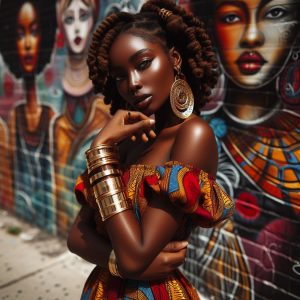
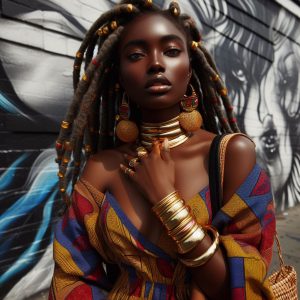

These technical capabilities explain why dedicating 6 to 8 hours in a single braiding session is not uncommon. For very large or highly intricate styles, the process can stretch across multiple days, commencing again when the stylist’s endurance or the client’s tolerance wanes. It is an undertaking requiring patience and care from both participants.
Common Techniques and Infinite Variations
While braiders each have preferred techniques informed by their backgrounds, core styles appear widely. Single plaits, box braids, Ghana braiding, cornrows, tree braids, crown braids, halo braids, ladder braids, and feed-in braids constitute building blocks that braiders integrate into customized designs. Decorative accents also abound, with cowrie shells, beads, leather bindings, rings, jewels, elastics, ribbons, embroidery, and dye all employed to put a distinct touch on universal techniques.
These myriad options mean that while extensive training establishes capability, true artistry springs from how braiders synthesize technique, tools, inspiration, and a client’s unique vision. By fusing cultural foundations with boundless creativity, they can weave infinite variations on age-old styles – each telling a one-of-a-kind story.
Reverence Through Regular Maintenance
Getting an African braided style sets the tone for a dedication to upkeep. As hair grows out, styles require re-doing every few weeks to maintain their intended shapes and durability. This maintenance reconnects the wearer back to the origins of their style and the artist who wove it. The process demands reverence for the labor, skill, and heritage underlying the work.
This continuity pays dividends; regular re-braiding strengthens hair over time through gentle tugging that stimulates growth. And so the cyclical process has come full circle – promoting healthy hair through the artistic honoring of one’s historical culture and identity.
From Tribal Tales to Personal Narratives
African hair braiding has never been a static art form. While borderless creativity now merges with ancient styles, the heritage at its core remains an anchor. This honoring of the past contextualizes braiding not as a mere trend or style but as an umbilical linking generation across chasms of change. By weaving this history into new patterns, African braiders evoke enduring cultural tapestries that mend the rips and tears time inflicts on all stories – giving renewed voice to tales both ancestral and personal.
Frequently Asked Questions (FAQs)
- Q: How long do African braids last?
A: The longevity of braids depends on the braiding technique and hair care routine. On average, braids can last anywhere from 2 to 8 weeks. - Q: Can I braid my hair?
A: While learning self-braiding techniques is possible, seeking professional help for intricate braiding styles is recommended to ensure proper technique and avoid damage. - Q: Are African braids suitable for all hair types?
A: African braiding techniques can be adapted to suit various hair types, including natural, relaxed, and textured hair. - Q: How often should I wash my braids?
A: Washing your braids once a week is generally sufficient. Overwashing can lead to dryness and scalp irritation. - Q: Can I style my braids?
A: Yes, you can style your braids in various ways, such as updos, buns, and ponytails. However, avoid tight styling to prevent hair damage.
African hair braiding is a beautiful and versatile art form celebrating cultural heritage and self-expression. By understanding the different braiding techniques, caring for your braids, and addressing common questions, you can embrace this rich tradition and enjoy healthy, beautiful hair.
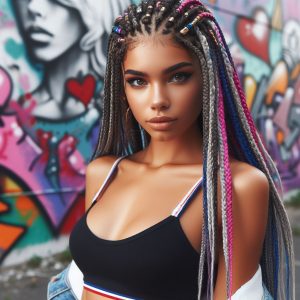
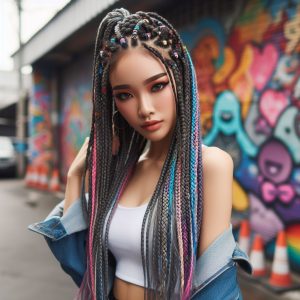
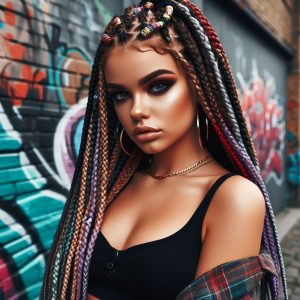
References
- Godrey, Nehru Boniface. “African Braids Hairstyles: New Meanings, Identity, and Expressions Among the Women of Color.” Critical Arts, vol. 29, no. 1, Jan. 2015, pp. 44–71, doi:10.1080/02560046.2015.1009847.
- “African Hair Braiding.” Wikipedia, Wikimedia Foundation, https://en.wikipedia.org/wiki/African_hair_braiding
- Lovejoy, Bessie M. “Hairstyles as Carriers of Meaning from Africa to the Diaspora: The Case of New Orleans.”Journal of American Folklore, vol. 116, no. 461, 2003, pp. 227–242, https://www.jstor.org/stable/4137927.
